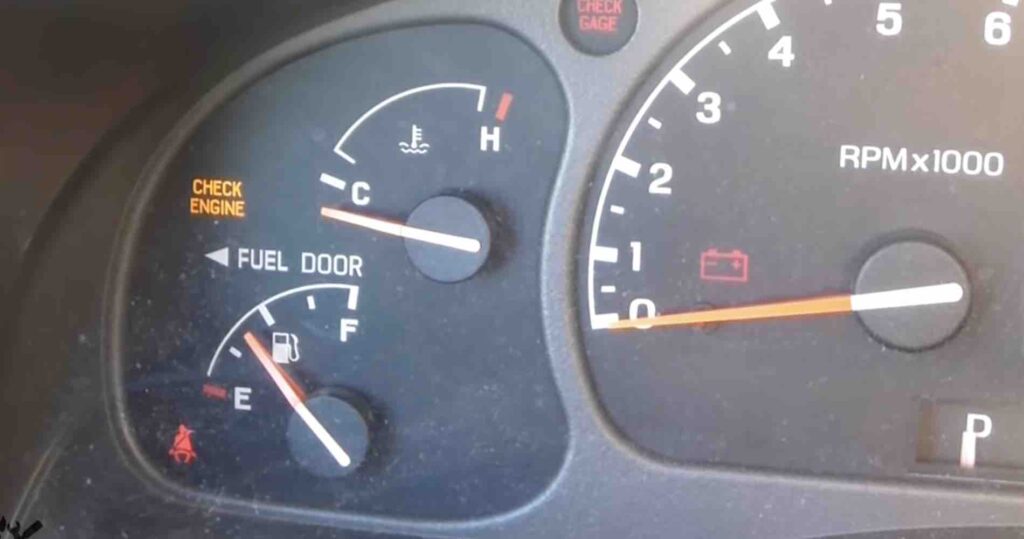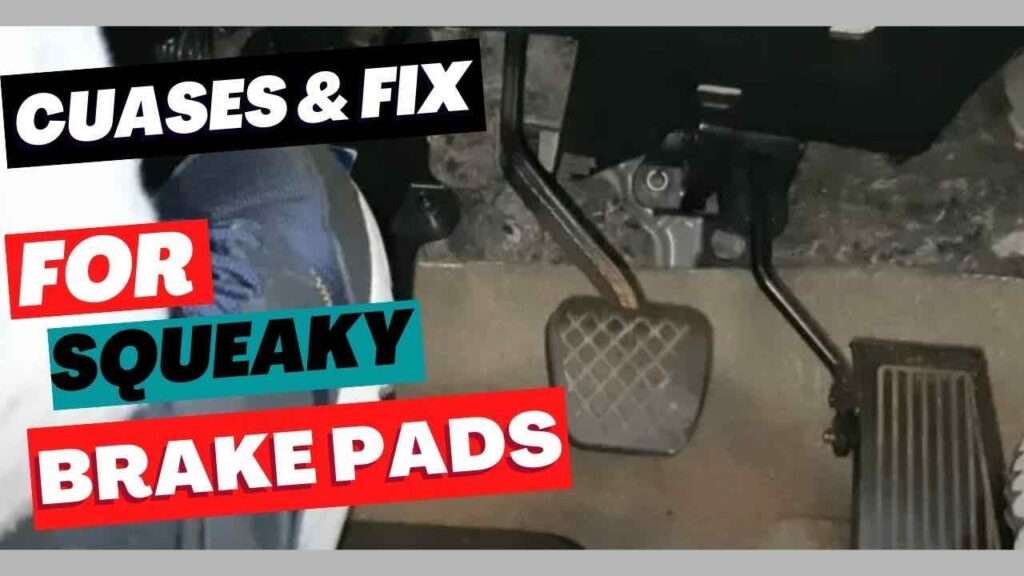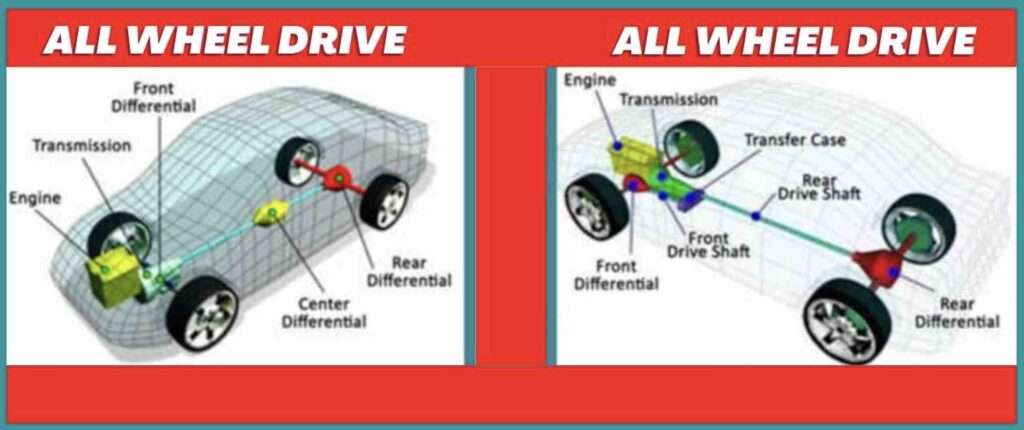Last updated on July 11th, 2023 at 08:52 pm
If you are looking for an easy and quick fix for no heat in car this post shows you how to fix heater in car with a step-by-step guide on How to Fix a Car with No Heat. Also, you see the causes and some common no heat in car symptoms to check for.

When you turn on your car’s heater, you expect warm air to come pouring out within seconds. But what happens if the heater stops working and leaves you shivering in frigid winter air? No one enjoys driving in a freezing car, yet this is an all too common issue that many drivers experience.
Car heaters can malfunction for many reasons, such as a malfunctioning thermostat, blown fuse, or clogged radiator, etc. No matter what the cause may be, an unresponsive car heater can be both frustrating and costly to fix if you are where to hire an experienced mechanic.
So before you spend hundreds of dollars on repairs for your car, try these steps to fix the problem yourself. With some basic knowledge and helpful troubleshooting advice, you can diagnose and resolve the problem on your own.
This article will give you a step-by-step guide on how to fix your car with no heat, the common no heat in car symptoms you may notice, diagnose the issue, and make necessary repairs. I will cover everything you need to know to get your heater back up and running. So let’s get started!
Common causes of no heat in a car
Troubleshooting a car that won’t heat up can be daunting, but understanding the common causes can help you quickly identify and resolve the issue. Here are some of the most likely culprits:
Low Coolant or Antifreeze
If your car’s coolant or antifreeze levels are low, there may not be enough hot fluid circulating through the heater core to warm up the cabin. You may notice that your dashboard temperature gauge is lower than usual or fluctuating, or there’s a sweet smell or pool of fluid under your car. In other words, can make your car heater works intermittently. In such cases, check the coolant level and add more as necessary; additionally, look for any leaks or damage to the radiator or hoses.
Faulty thermostat
The thermostat is a small valve controlling the coolant flow between an engine and a radiator. If it malfunctions or gets stuck, it could prevent your engine from reaching its optimal temperature or cause a bypass of coolant through the heater core. Signs of an issue with this thermostat include slow warm-up times, fluctuating temperatures, or overheating. You can test for malfunction by taking away the thermostat and checking its opening temperature; alternatively, you could replace it with a new one.
Clogged Heater Core
Over time, the heater core can become clogged with debris, rust, or scale that restricts its hot coolant flow and airflow over it. This may result in weak or lukewarm air coming from vents or no air at all. To fix a clogged heater core, you may need to flush it with a chemical cleaner or replace it with a new one.
Faulty Heater Fan or Blower Motor Resistor
The heater fan or blower motor is responsible for pushing hot air through ducts and into your cabin. If it fails, you may hear a weak or squealing noise, feel no airflow, or only cold air. Furthermore, the blower motor resistor, which regulates its speed, can also malfunction and cause similar symptoms. You can test both components by checking their voltage at their connectors, or replacing them with new ones if necessary.
Leaky Radiator or Hoses
If the radiator or hoses that connect it to the engine or heater core have cracks, holes, or loose fittings, they can leak coolant and reduce the system’s pressure and flow, leading to heat loss or engine overheating. Therefore you should inspect these components for any signs of damage and replace/repair them as necessary.
Faulty HVAC Controls or Wiring
If none of the above causes apply, it could be a problem with your HVAC controls or the wiring connecting them to fans, thermostats, or sensors. You may notice that they don’t respond, the fan speed is irregular, or the airflow is redirected to vents incorrectly. You should consult a mechanic or electrician for diagnosis and repair in such cases.
Common no heat in car symptoms
Some of the common Signs that your car’s air conditioning is malfunctioning can include:
- Cold air blowing from vents: One of the most noticeable symptoms is when only cold air comes from the vents, even when your thermostat is set to hot.
- Low or Varying Temperature Gauge: If the temperature gauge on your dashboard is reading lower than usual or fluctuating between hot and cold, this could indicate that the engine has not reached its ideal operating temperature.
- Sweet or Musty Smell: If you detect a sweet aroma from the vents, it could indicate a coolant leak; on the other hand, musty odors may indicate mold growth in your heating system.
- Overheating Engine: If the engine is overheating, it could indicate a coolant leak or a malfunctioning thermostat.
- Unusual Noises: If you hear unusual sounds like banging or rattling coming from the heatingsystem or engine compartment, it could be indicative of a malfunctioning blower motor, heater core, or other components.
If you observe any of these symptoms in your car, it’s essential to address the problem promptly in order to prevent further harm to its heating system and engine.
Quick fix for no heat in car: How to Fix a Car with No Heat (Easy)
If your car isn’t producing heat in cold weather, don’t fret! There are some simple steps you can take to diagnose and resolve the problem well, I have created this article to walk you through each step for an easy and quick fix for no heat in car issues you are having.
Step-by-Step Guide to Fix a Car With No Heat:
Step 1: Check Coolant Levels
The initial step in fixing a car with no heat is checking its coolant levels. Low coolant levels can lead to lack of warmth inside even when the engine is operating at optimal temperatures. Locate your radiator cap and ensure all fluids have been filled to the top; if not, add more coolant until it reaches this recommended level. Additionally, inspect any coolant reservoirs (if available) and fill them up to their cold fill line if needed; low coolant could be to blame for why your heater isn’t functioning properly.
Step 2: Check the car Thermostat
If the coolant level is sufficient, the next step should be to check the thermostat. A malfunctioning thermostat could prevent hot coolant from reaching the heater core. To check it, let your engine run until warm and feel both radiator hoses; if one hose is hot and the other cold, a malfunctioning thermostat could be to blame.
Step 3: Check Heater’s Core
A clogged heater core can impede hot air from blowing into your car. To check it, locate it behind the dashboard on the passenger side. If it appears that there’s debris inside, try flushing with a garden hose; however, if that doesn’t solve the problem, replacing may be necessary.
Step 4: Check Heater Control Valve
If the heater control valve in your car is malfunctioning, you may experience no heat in the car. To inspect, start the engine and let it run for several minutes; feel the heater hoses for hot and cold spots – these indicate a stuck valve that needs replacement.
Step 5: Check Blower Motor
If none of the above steps solve your problem, it could be due to a problem with the blower motor. To check it, turn on the heat and feel for air coming out of vents – if there’s none, there could be an issue with its operation. You can check for damage by checking both fuse and wiring connections first; if they’re satisfactory, replacing the blower motor may be necessary.
Step 6: Examine the Water Pump
A malfunctioning water pump can lead to an overheated engine which will eventually cause your car’s heater to stop working. Check for signs of leaks and make sure the impeller is still spinning; otherwise, the hot coolant won’t enter into your heater core or radiator, and you won’t experience any warmth inside the cabin.
Step 7: Verify the Blower Fan
If your coolant levels, thermostat, and water pump are all working correctly, but still no heat comes on, it may be time to inspect your blower fan. Turn on your car’s heat and set it down flat on a surface. Check if all speeds – low, medium, and high – work correctly with no faulty parts. If not, you’ll need to replace it.
Additional tips on this Quick fix for no heat in car
In addition to the steps outlined above, a few additional tips can help ensure your car’s heating system is functioning optimally.
- First and foremost, flushing the cooling system is recommended. Over time, car coolant can become contaminated with dirt and debris, which can clog pipes and reduce efficiency in heating systems. Flushing involves draining out old coolant and replacing it with fresh, clean coolant, which will improve performance overall.
- Second, inspect the radiator and hoses for any signs of leaks or damage. If these parts are compromised, your heating system may not function optimally. Look out for signs of corrosion or wear, and replace any damaged parts as necessary.
- Thirdly, inspect the fuse for your blower motor. If it has blown, the motor may not function, and you won’t have heat. To resolve this problem, replace it with a new fuse of similar amperage.
- Another helpful tip is to inspect the cabin air filter. A clogged or dirty filter can restrict airflow and reduce the efficiency of your heating system. Replace it if it appears dirty or has been more than one year since the last replacement.
- Finally, professional assistance may be in order if you’re still having trouble diagnosing or fixing the problem yourself. A mechanic can diagnose and resolve the underlying cause of the issue, ensuring your car’s heating system functions optimally.
Conclusion
Maintaining your car’s heating system is vital during cold weather months, especially if there’s no heat in your vehicle. If the issue lies within either of these categories, you can diagnose and solve the problem yourself or seek professional assistance if needed. Stay warm this winter by staying safe on the roads!

Uchenna is a Radiographer and Auto parts mechanic who recently got his automotive diploma as an auto repair technician, and since then, has worked on fixing various car problems.
Working as just a radiographer, Uchenna didn’t just get all the fulfillment he desired, because he truly loved doing things tilted toward cars. As a kid, he would take apart his toy cars to see how they worked and would spend hours tinkering with his bike.
So, in 2017 he made the tough decision to become an auto mechanic. He threw himself into his studies and now loves every aspect of what he does.
He gets to work with his hands, solving problems and bringing cars back to life, and sharing his knowledge and easy quick-fix guide online are all part of what makes him feel fulfilled.



